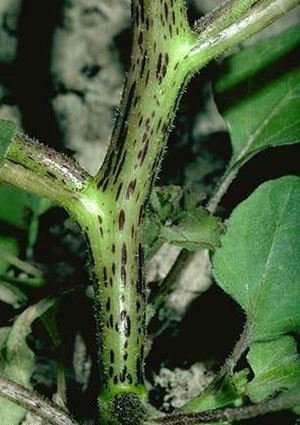Field Guide  Weed Management
Weed Management  Cocklebur
Cocklebur
Cocklebur (Saponaria Caccaria L.)
Crop Impacts: Soybeans, grazing fields (thus affecting animals-cattle, sheep, etc)
 | |
About Cocklebur:Cocklebur is an annual weed, with a rough stem that has purple spots. The leaves on this plant are mid sized, and take on a heart like shape, and tend to have a hairy slightly sticky texture. This weed is sometimes found in areas where there is a near by water source. The weed germinates best after being drenched in water, or having a good water soaking. Family: Composite or Aster Family  
Cocklebur Scouting and Prevention:Field awareness and maintenance is a very important part of preventing Cocklebur. It becomes more and more difficult to terminate this weed once it has had the opportunity to set in firm roots. Cocklebur Control:Once the realization has occurred that this particular weed has infested your fields, it is important to eliminate all adult plants to decrease chances of further germination and seeds spreading. Cocklebur has a very competitive nature. It will take over nutrients in fields and water sources. This can cause devastating damage to crops, and can even harm livestock. Ensure that fields are well maintained, and proper herbicides are used. Latin / Alternative Cocklebur Names:- - Lampourde Glouteron
- - Bur
- - Clotbur
- - Glouteron
Additional Cocklebur Resources: |
http://www.weedwreckingcrew.com/ Dupont Weeds Wrecking Crew
http://www.precisionpac.com/ Dupont Precision Pac
http://www.omafra.gov.on.ca/english/crops/facts/01-005.htm Ontario Government: Ag
http://www.vet.purdue.edu/toxic/plant32.htm
http://www.gov.mb.ca/agriculture/crops/weeds/fab33s00.html Manitoba Government: Ag